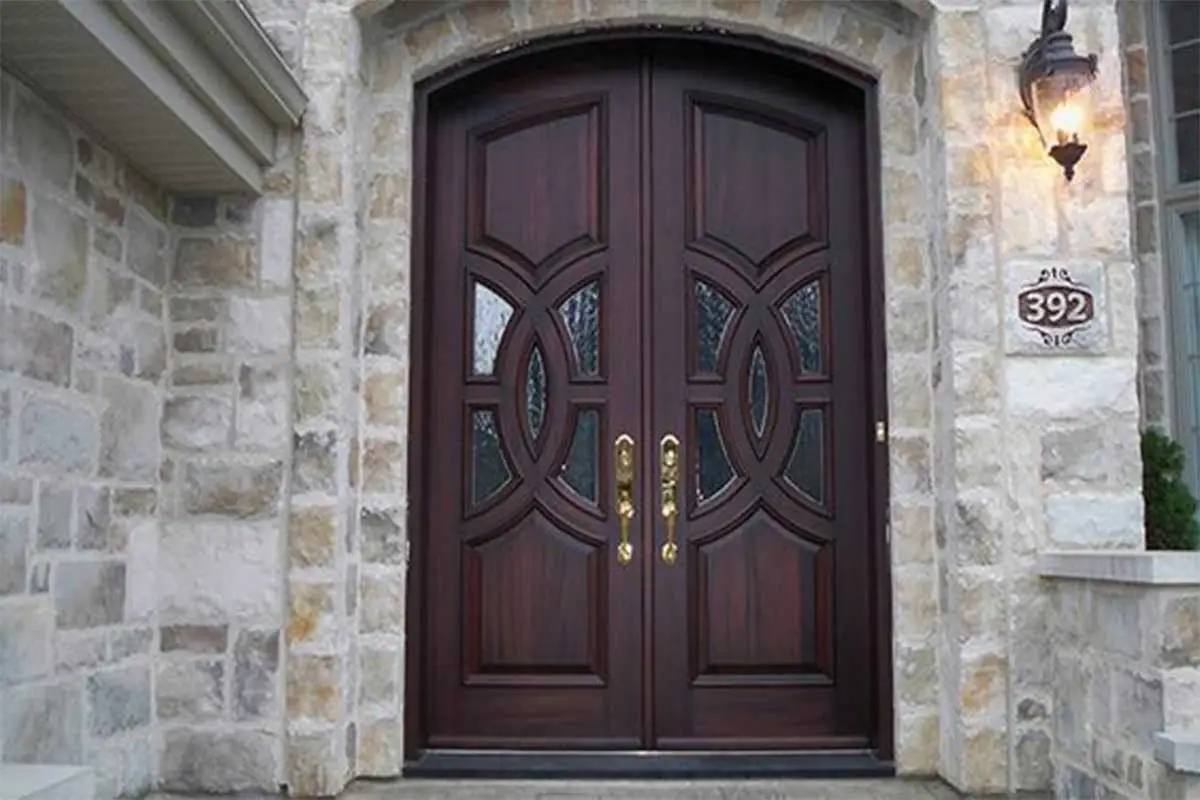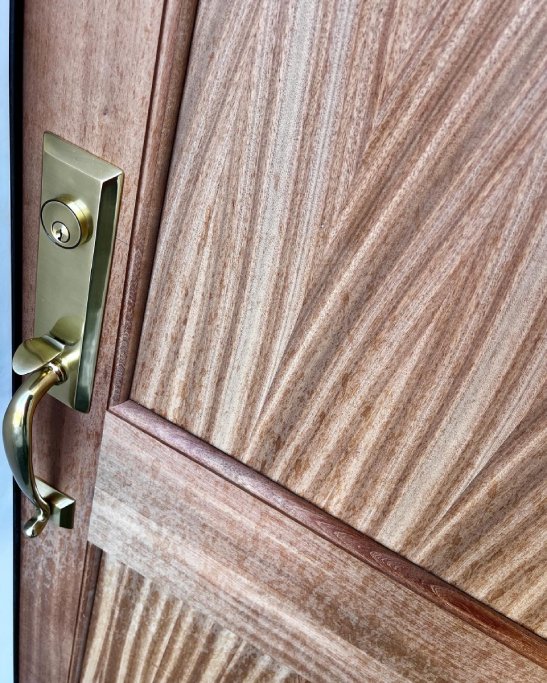Is your home as healthy as it could be? The answer might lie beneath the paint. In the heart of Atlanta, the shift towards Low-VOC Refinishing Solutions is not just a trend but a lifestyle change for many.
This article unravels how these eco-friendly options are revolutionizing homes, making them safer and more sustainable. Discover the transformative power of Low-VOC products; it’s time to turn the page towards a healthier home environment. Follow Door4life to learn more.
Understanding Low-VOC Refinishing Solutions
Low-VOC refinishing solutions represent a significant advancement in home renovation, allowing Atlanta homeowners to improve their living spaces without compromising their health or the environment.
These innovative products are designed to minimize the release of volatile organic compounds (VOCs), known for their potential health risks and contribution to indoor air pollution.
The Health Benefits of Choosing Low-VOC
- Improved Indoor Air Quality:
By opting for low-VOC refinishing solutions, homeowners can significantly reduce the concentration of harmful chemicals in the air, leading to cleaner, healthier indoor environments.
- Reduced Health Risks from VOC Exposure:
Exposure to high levels of VOCs is linked to a variety of health issues, including respiratory problems, headaches, and eye irritation. Low-VOC products lower the risk of these adverse health effects.
- Safe furniture refinishing for pets and kids in Atlanta:
Children and pets are more susceptible to the harmful effects of poor indoor air quality. Low-VOC solutions offer a safer alternative, ensuring the well-being of the most vulnerable members of your household.
Table: Benefits of Low-VOC Refinishing Solutions
| Benefit | Description |
| Improved Indoor Air Quality | Low-VOC refinishing solutions significantly reduce indoor air pollutants like volatile organic compounds (VOCs), formaldehyde, and other chemicals that can irritate respiratory systems, trigger allergies, and contribute to headaches, dizziness, and fatigue. This creates a healthier living environment for everyone in the home. |
| Environmental Impact | By choosing low-VOC products, you contribute to reducing outdoor air pollution and protecting the environment. Low-VOC refinishing solutions often use recycled materials and sustainable manufacturing processes, minimizing their environmental footprint. |
| Health and Safety | Low-VOC refinishing solutions pose a lower risk to human health compared to traditional options. They can help reduce the risk of respiratory problems like asthma and allergies, skin irritation, and even certain cancers linked to VOC exposure. |
Low-VOC Refinishing Solutions Explained
Low-VOC refinishing solutions are at the forefront of eco-friendly home improvement. These products contain fewer volatile organic compounds, making them a healthier choice for the planet and your family.
Read it: Four Benefits Of Professional Wood Door Refinishing In Atlanta
- Definition of Low-VOC:
“Low-VOC” refers to products specifically formulated to release minimal volatile organic compounds into the air. This characteristic makes them an essential component of green building practices.
- How Low-VOC Products Work:
Low-VOC products achieve reduced chemical emissions through alternative solvents and bio-based ingredients. This innovation does not compromise performance, ensuring homeowners do not have to choose between efficacy and health.
- Importance in Modern Homes:
In today’s world, where indoor air quality is a growing concern, low-VOC refinishing solutions in modern homes cannot be overstated. They are crucial in creating safer, more sustainable living environments, particularly in urban areas like Atlanta, Georgia, USA.
Key Areas for Low-VOC Solutions in Your Home
Incorporating Low-VOC refinishing solutions into your home contributes to a healthier living environment and aligns with sustainable practices. Focusing on key areas within your home to apply these solutions can significantly impact indoor air quality and safety.
From the ground up, selecting the right materials for your floors to the furniture that adorns your rooms and even the finishes on doors and trims, each choice plays a pivotal role in creating a non-toxic, eco-friendly space.
Flooring Options
The foundation of any home and flooring options significantly influence indoor air quality. Opting for low-VOC flooring options can drastically reduce the presence of harmful chemicals in your home.
- Low-VOC Flooring Options:
These include materials like bamboo, cork, and certain types of hardwoods that are processed without harmful chemicals. These flooring choices ensure a safer indoor environment and offer durability and aesthetic appeal.
- Non-Toxic Flooring:
Emphasizes the importance of selecting materials that do not emit harmful emissions. This includes natural materials or those certified by reputable health and safety standards.
- Eco-friendly furniture refinishing Atlanta:
Refers to restoring or refinishing flooring and furniture using products with minimal environmental impact, crucial for maintaining indoor air quality and safety for families in Atlanta.
Furniture and Cabinets
Furniture and cabinetry play a substantial role in the indoor air quality of your home due to their surface area and frequent use. low-VOC solutions in these areas can contribute significantly to a healthier living space.
- Sustainable furniture refinishing Atlanta: Opting for refinishing services that use low-VOC paints and finishes can transform your furniture into safer, beautiful pieces without compromising your health.
- Non-toxic furniture refinishing Atlanta: Ensures that the furniture and cabinets within your home are free from harmful chemicals, making them safe for use around children and pets.

Doors and Trim
Doors and trim may seem like minor details, but they can be significant sources of VOCs due to the paints and finishes used. Selecting low-VOC products for these areas is essential for a holistic approach to a healthier home.
- Painting Doors: Choosing Low-VOC paints for doors minimizes toxic emissions and provides durable, long-lasting finishes that withstand the test of time.
- Door refinishing: Refinishing doors with Low-VOC products can breathe new life into old doors, enhancing the aesthetic of your home while ensuring it remains a safe environment.
- Repair Paint of Door: Addressing repairs with low-VOC options ensures that maintenance activities do not compromise the indoor air quality of your home.
Step-by-Step Guide to Refinishing Your Home with Low-VOC Products
Refinishing your Doors with low-VOC products is a straightforward process that significantly enhances indoor air quality and contributes to a healthier living environment. This guide will walk you through selecting the right products, preparing your space, applying the finishes, and ensuring proper ventilation and curing for the best results.
Step One: Choosing Your Low-VOC Products
The first step in your refinishing project involves selecting the appropriate Low-VOC products. With an array of options available, it’s crucial to:
1. Read Labels Carefully:
Look for products that explicitly state low-VOC content. Certifications from environmental organizations can also guide your choice.
2. Consider the Application Area:
Different areas of your home may require specific products, such as Low-VOC laminate flooring for living spaces or Non-toxic paint for bedrooms.
3. Consult Professionals:
If unsure, seek advice from professionals specializing in eco-friendly furniture door refinishing in Atlanta for recommendations on the best products for your project.
Step Two: Preparing Your Space
Proper preparation is critical to ensuring the successful application of low-VOC finishes. To prepare your space:
- Clear the Area: Remove furniture and other items to provide a clean working surface.
- Clean Thoroughly: Ensure the surfaces to be refinished are clean and free from old paint or finishes. This might involve sanding or using a Non-toxic stripping agent.
- Ensure Adequate Ventilation: Even with low-VOC products, it’s crucial to maintain good airflow to disperse any fumes. Open windows and use fans to circulate air.
Read it: Four Reasons To Hire Door 4 Life Wood Refinishing Professionals
Step Three: Application Techniques
Applying Low-VOC finishes requires attention to detail and technique to achieve the best results:
1. Follow Manufacturer Instructions:
Adhere strictly to the product’s application guidelines regarding drying times and a number of coats.
2. Use Proper Tools:
Invest in high-quality brushes, rollers, or sprayers appropriate for the type of finish you’re applying.
3. Apply Evenly:
Ensure each coat is applied smoothly and evenly, not overloading surfaces with too much product at once.
Final Steps: Ventilation and Curing
After applying your Low-VOC finishes, the final steps involve ensuring proper ventilation and curing:
- Maintain Airflow: Continue ventilating the area well after application to aid in the curing process and reduce residual odors.
- Allow Adequate Curing Time: Different products have varying curing times; some may require several days to harden and become durable fully.
- Check Results: Once cured, inspect the finish for any missed spots or imperfections that might need touch-ups.
Comparing Low-VOC Products
In the journey towards creating healthier living spaces, understanding the differences between Low-VOC products and their traditional counterparts is crucial. This comparison sheds light on the benefits and efficiencies of eco-friendly door refinishing solutions.
Low-VOC Paints Versus Traditional Paints
Low-VOC paints have revolutionized home renovation by offering a safer alternative to traditional paints, known for their high volatile organic compound (VOC) content. Here’s how they compare:
- Health Impact: Low-VOC paints significantly reduce the risk of respiratory problems, headaches, and other health issues associated with long-term exposure to traditional paint fumes.
- Environmental Effect: By emitting fewer harmful chemicals, Low-VOC paints contribute less to air pollution and ecological degradation than traditional paints.
- Performance and Quality: Contrary to common misconceptions, Low-VOC paints provide durability and coverage that matches or exceeds that of traditional options. Innovations have ensured that eco-friendliness does not mean compromise.
- Odor: Low-VOC options tend to have a less pungent smell, making the painting process more pleasant and allowing for a quicker return to newly painted spaces.
Transitioning to low-VOC paints supports indoor air quality and aligns with the broader goals of environmental conservation and sustainability, particularly relevant in urban areas like Atlanta, Georgia, USA.
Table: Comparison of Low-VOC and Traditional Products
| Feature | Low-VOC Products | Traditional Products |
| VOC Content | Minimal VOCs, typically less than 50 g/L | High VOCs, ranging from 100 g/L to 500 g/L or more |
| Health Impact | Lower health risk due to reduced VOC emissions, improving indoor air quality and potentially reducing respiratory problems, allergies, and other health concerns. | Higher health risk due to VOC emissions, which can irritate the respiratory system, trigger allergies, and contribute to headaches, dizziness, and other health problems. |
| Environmental Effect | Eco-friendly, with lower environmental impact due to reduced VOC emissions and often containing recycled materials or sustainable ingredients. | Potentially damaging to the environment due to high VOC emissions, contributing to outdoor air pollution and harming ecosystems. |
| Durability and Performance | Modern low-VOC products offer comparable durability and performance to traditional options, with advancements in technology ensuring quality and longevity. | Traditional products may offer good durability, but performance can vary depending on quality. |
| Cost | Generally slightly higher cost than traditional products due to the use of higher-quality, eco-friendly ingredients and stricter manufacturing processes. | Lower upfront cost, but potential hidden costs associated with health impacts and environmental damage. |
Eco-Friendly Stains and Sealants
For homeowners passionate about sustainability, choosing eco-friendly stains and sealants is another step towards an environmentally conscious lifestyle. These products, much like Low-VOC paints, offer several advantages:
- Safety: Eco-friendly stains and sealants are formulated to minimize toxic emissions, making them safer for both the applicator and the home’s inhabitants, including pets and children.
- Durability: Modern eco-friendly stains and sealants are designed to withstand wear and tear, offering protection and longevity comparable to traditional products.
- Variety: There is a wide selection of colors and finishes available, allowing for Custom furniture refinishing in Atlanta and creativity in home design without compromising on safety or environmental impact.
- Application: Similar to low-VOC paints, these products can be applied using standard techniques and tools, ensuring accessibility for DIY enthusiasts and professionals.
Table: Low-VOC Product Selection Guide
| Product Category | Key Considerations |
| Paints | Look for certifications like GREENGUARD Gold, LEED-compliant, or UL EcoLogo. Consider coverage area, desired finish (matte, satin, gloss), and color options. |
| Flooring | Choose materials with low-VOC content like cork, bamboo, engineered hardwood with soy-based adhesives, or linoleum. Consider durability, installation requirements, maintenance needs, and desired style. |
| Sealants and Finishes | Opt for water-based sealants and finishes with low-VOC content. Consider application method (brush, roll, spray), desired level of sheen, durability requirements, and curing time. |
The Role of Low-VOC Solutions in Eco-Friendly Home Renovation
Integrating Low-VOC solutions into home renovation projects is pivotal in advancing eco-friendly practices. The benefits of opting for these solutions extend beyond individual health and wellness, contributing significantly to environmental sustainability and efficiency. Here’s how:
1. Sustainability: Choosing low-VOC products is a step towards sustainable living. These products are often made with renewable resources and manufactured through processes that minimize environmental impact.
By selecting Low-VOC paints, stains, and sealants, homeowners support industry practices that prioritize using non-toxic, sustainable materials. This choice not only ensures a healthier living environment but also promotes the conservation of ecosystems and reduces the carbon footprint associated with home renovation.
2. Energy Efficiency: While the direct connection between low-VOC products and energy efficiency might not be immediately apparent, it exists within the broader context of eco-friendly renovation practices.
For instance, low-VOC sealants and insulating materials can improve a home’s energy efficiency by creating tighter seals and reducing thermal bridges, thereby decreasing the energy required for heating and cooling. This enhanced efficiency contributes to lower energy bills and a reduced demand for fossil fuels, aligning with goals for a more sustainable future.
3. Enhanced Air Quality: One of the most immediate benefits of using Low-VOC solutions is the significant improvement in indoor air quality. Traditional renovation materials can emit harmful chemicals for years after application, contributing to indoor air pollution that’s often much worse than the air outside, especially in densely populated areas like Atlanta, Georgia, USA.
Low-VOC products dramatically reduce these emissions, ensuring cleaner air inside the home. This is particularly beneficial for individuals with allergies, asthma, or other respiratory issues, as it reduces their exposure to irritants and potential allergens.
Maintenance and Care for Low-VOC Finishes
Ensuring the longevity and maintaining the appearance of Low-VOC finishes is key to maximizing their benefits over time. Proper care and maintenance preserve the aesthetic appeal of your home and contribute to sustaining indoor air quality. Here are some essential tips and strategies for maintaining your low-VOC finishes.
Daily Maintenance and Cleaning
Regular maintenance is crucial for keeping Low-VOC finishes in top condition. Here’s how you can incorporate routine care into your daily cleaning habits:
- Use Gentle Cleaning Solutions: Opt for mild, eco-friendly cleaning products to avoid damaging the Low-VOC finishes. Harsh chemicals can break down the finish and release harmful compounds into your home environment.
- Soft Cleaning Tools: Use soft cloths, sponges, or mops to clean surfaces. Abrasive tools can scratch or wear away the finish, diminishing its protective qualities and visual appeal.
- Immediate Spill Cleanup: Address spills as soon as they happen to prevent staining or damage to the finish. Low-VOC paints and finishes can be sensitive to prolonged exposure to liquids.
- Dust Regularly: Dust can accumulate and scratch the surface of floors, furniture, and painted walls. Regular dusting with a soft, dry cloth helps maintain the finish and appearance. Then finally fix them with Dustless furniture door refinishing in Atlanta.
Repairing Damages to Low-VOC Finishes
Even with careful maintenance, wear and tear are inevitable over time. Here’s how to address and repair damages to Low-VOC finishes effectively:
- Touch-Up Paints: Keep a small amount of the original paint or finish for touch-ups. Minor chips or scratches can often be repaired easily by quickly applying the matching Low-VOC product.
- Surface Preparation: Before repairing any damage, clean the area thoroughly and ensure it’s dry. Lightly sanding the area for paint touch-ups can help the new paint adhere better.
- Use Compatible Products: When making repairs, ensure the products are compatible with the original Low-VOC finishes. This maintains the integrity and benefits of the Low-VOC materials.
- Professional Help: For significant damages, especially with flooring options or furniture, consider consulting a professional specializing in eco-friendly restoring in Atlanta. They can ensure repairs are done correctly and with the appropriate Low-VOC products.
Read it: Weatherproof Your Doors: Essential Repairs for Atlanta’s Climate
Table: Maintenance Tips for Low-VOC Finishes
| Task | Recommendation |
| Daily Cleaning | Use gentle, non-toxic cleaners specifically formulated for low-VOC finishes. Avoid harsh chemicals, abrasive cleaners, and ammonia-based products. Opt for soft cloths or microfiber mops to prevent scratching. |
| Damage Repair | For minor scratches or scuffs, use touch-up products specifically designed for low-VOC finishes. Ensure they match the original finish in color and sheen. If necessary, consult a professional for more extensive repairs. |
| Ventilation | Maintain good air circulation during and after application of any refinishing products, even low-VOC ones. Open windows and doors, and use fans to promote airflow and remove any lingering fumes. |
By following these guidelines for daily maintenance and addressing wear and tear, homeowners can enjoy the beauty and health benefits of Low-VOC finishes for years to come. Regular care not only extends the life of these finishes but also supports a healthier, more sustainable living environment.
Conclusion
We’ve journeyed through Low-VOC Refinishing Solutions’ significant benefits and applications, demonstrating their crucial role in fostering healthier, more sustainable living spaces. From the basics of choosing the right products to the detailed application steps, this guide underscores the importance of making informed decisions for your home renovations.
For those inspired to embark on their eco-friendly home improvement journey, Door4Life awaits to guide you further. Explore more insights and take a step towards transforming your Atlanta home into a haven of health and sustainability.
Engage with us in the comments or visit our blog for more enlightening posts on making your living space a testament to eco-conscious living.
FAQ
1. How long do VOCs last after hardwood floor refinishing?
VOC off-gassing from oil-based finishes can persist for months or years, while lower-VOC water-based products typically finish off-gassing within a few days.
2. Are floor refinishing fumes harmful?
Yes, fumes from polyurethane can be toxic, causing eye and respiratory irritation, and may even be flammable if exposed to open flames or heat sources.
3. How long does it take for refinished floors to stop smelling?
The odor from polyurethane can linger for several days to weeks, with oil-based finishes taking up to 72 hours to dissipate completely, necessitating staying out of the house for safety.
4. Can I sleep in my house after refinishing hardwood floors?
It’s advisable to wait at least two days for oil-based polyurethane finishes, with a minimum of five days recommended due to fumes. Safety is paramount, even with alternative sleeping arrangements.
5. How do you make hardwood floors look new without refinishing?
Avoid damp mopping, which can create stains; use a dry dust mop with soft microfibers to clear dirt and dust, preserving the floor’s appearance over time.
6. Do refinished floors add value to a home?
Yes, significantly. Refinishing hardwood floors can increase home value by up to 348%, making it one of the most rewarding home improvement investments, as proven by past projects.
7. How do you neutralize VOCs in the home?
Utilize exhaust fans, attic fans, or whole-house fans to circulate air and dilute VOC concentrations, while air purifiers with PCO and activated carbon effectively remove VOCs from indoor air.
8. Is there a non-toxic way to refinish hardwood floors?
Yes, options like linseed oil, Looking Glass Beeswax Polish, and Bio Poly Natural Furniture Refinishing Atlanta offer zero VOCs and pure finishes, ensuring safety and environmental friendliness.
9. What is the difference between resurfacing and refinishing hardwood floors?
Resurfacing applies a new layer over existing flooring, while refinishing involves sanding down the surface and applying a new stain or finish, offering different approaches to floor restoration.
10. How dusty will my home be during hardwood floor refinishing?
Dust is inevitable during refinishing, but using advanced containment systems significantly reduces airborne particles, ensuring a cleaner and safer environment for homeowners.
Sources:
https://greenwaveforever.com/eco-friendly-green-3https://www.justfloored.com/atlanta-hardwood-floor-installershttps://www.nufinishpro.com/atlanta/https://www.simplifloored.com/no-low-voc-finishes.htmlhttps://atlantahomeimprovement.com/how-to-make-your-next-project-eco-friendly/https://www.firstatlantaflooring.com/news/does-hardwood-flooring-improve-air-quality/https://advancedentpc.com/about-vocs-and-air-quality/https://www.justfloored.com/floor-installation-alpharettahttps://www.emperialhardwoodfloors.com/hardwood-floor-refinishing


